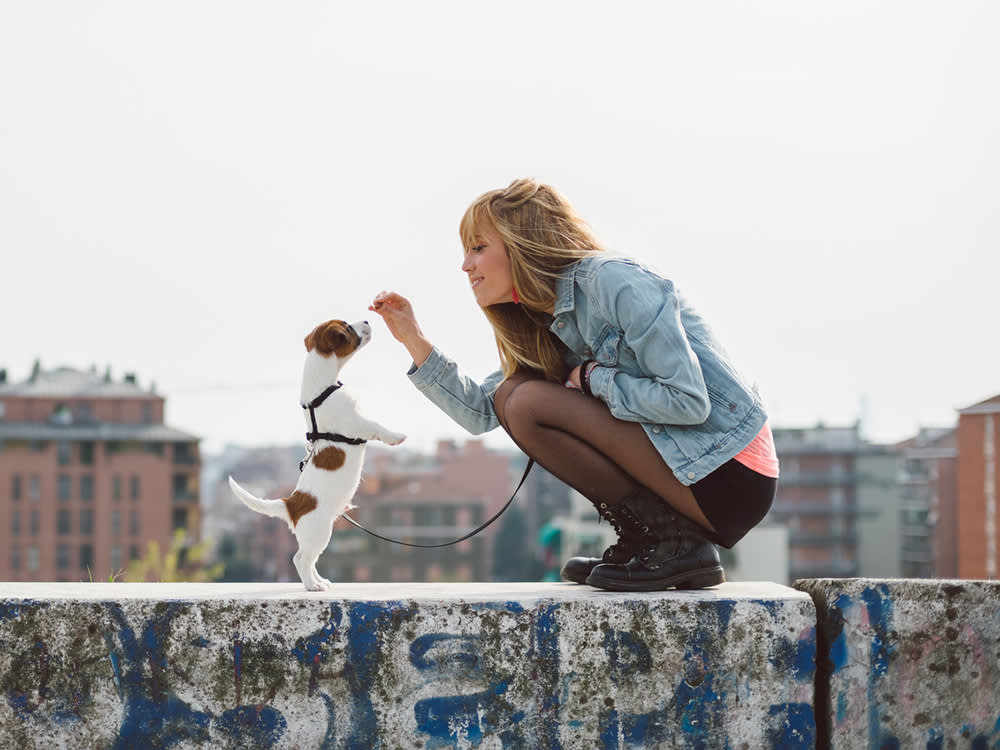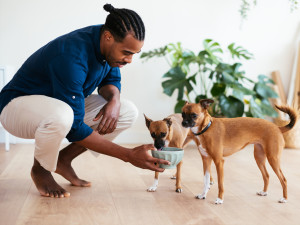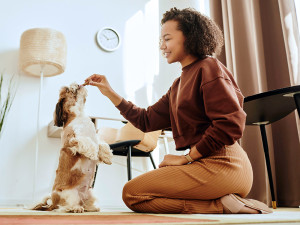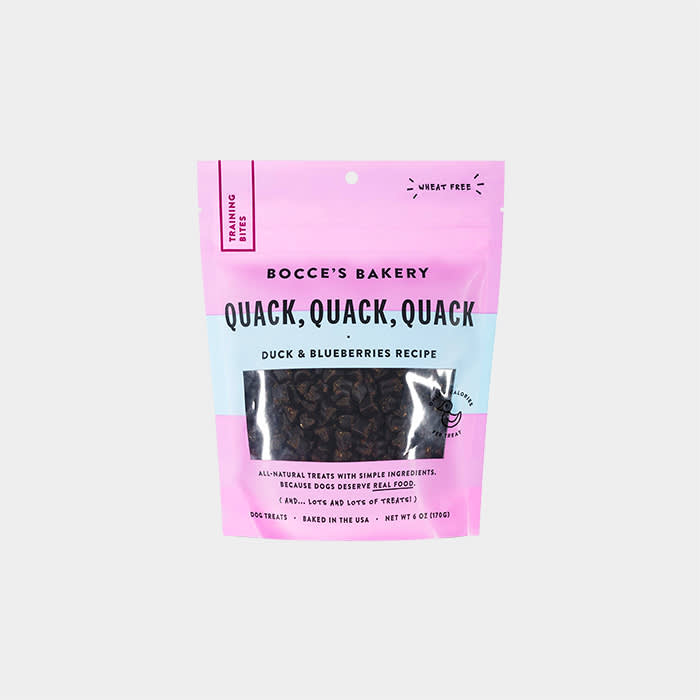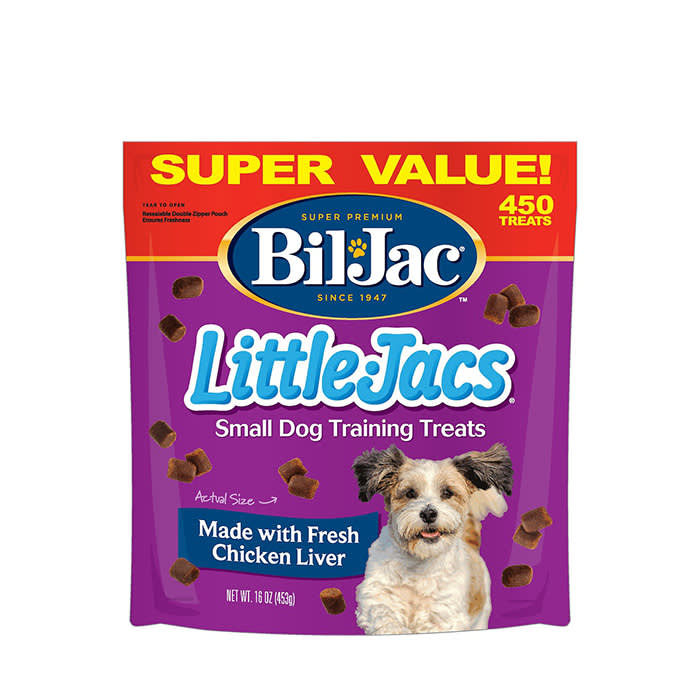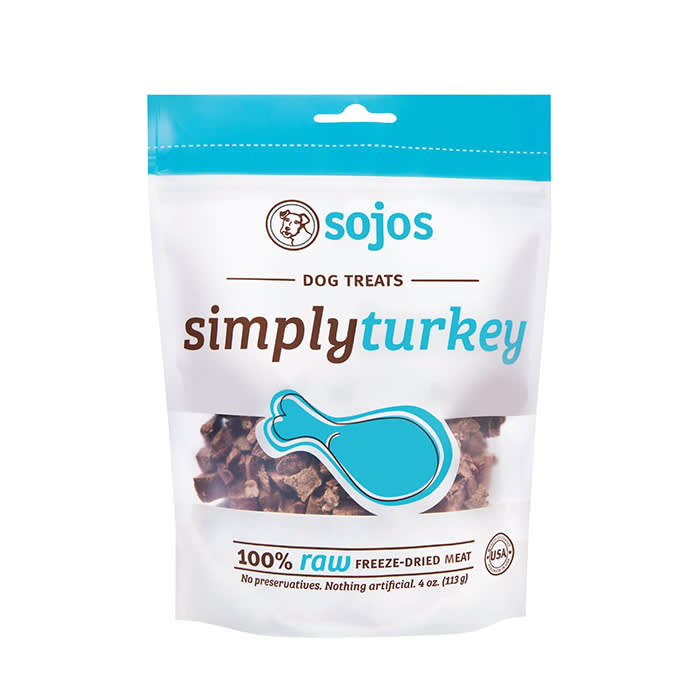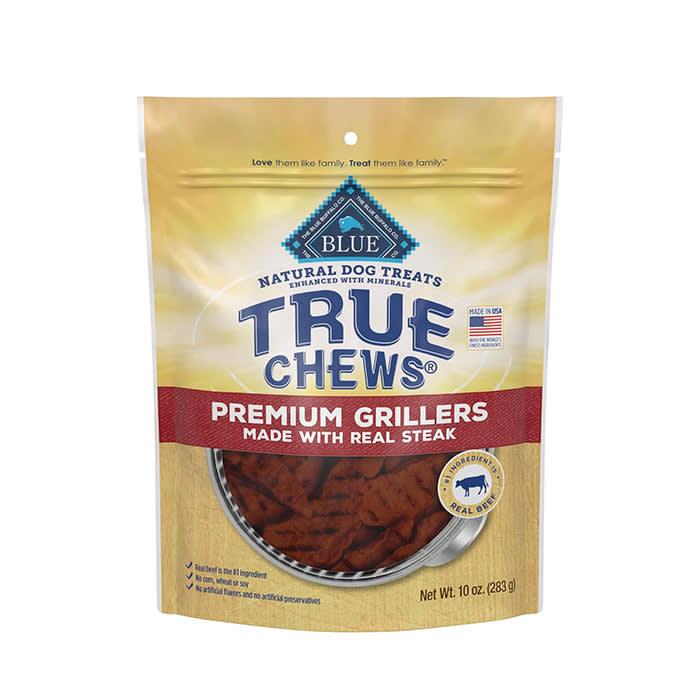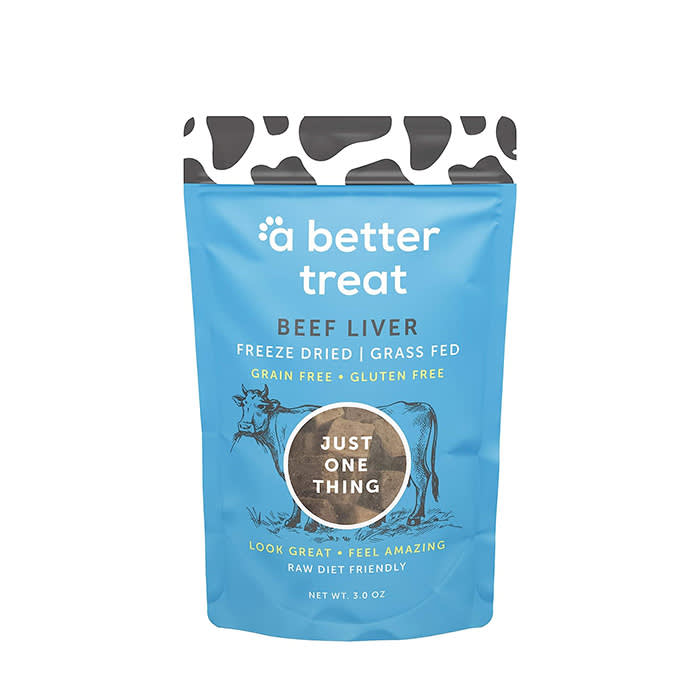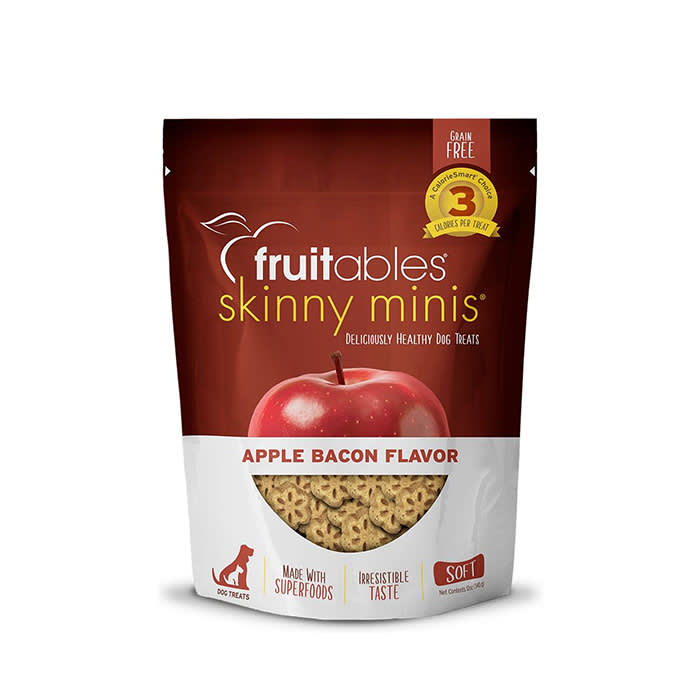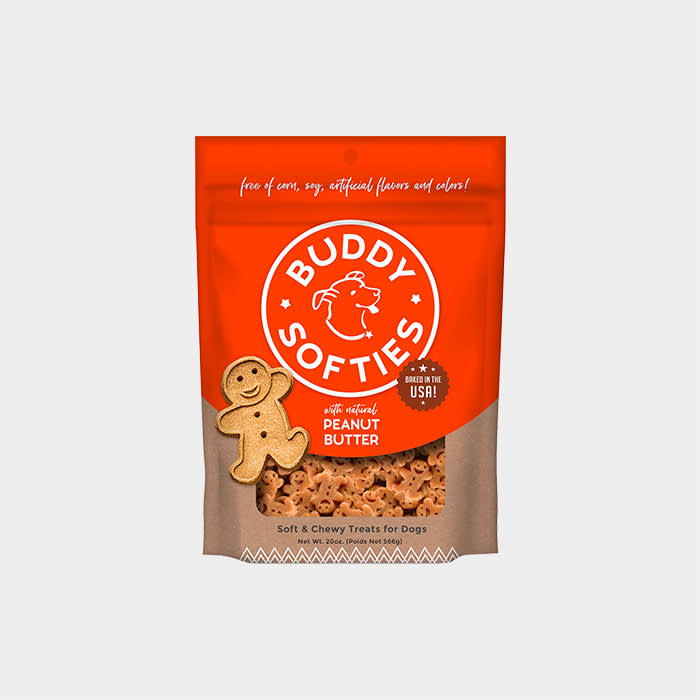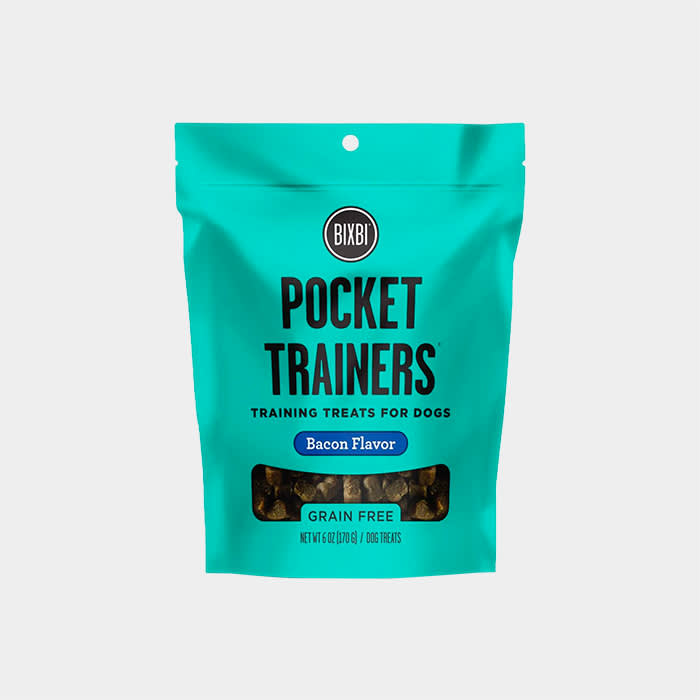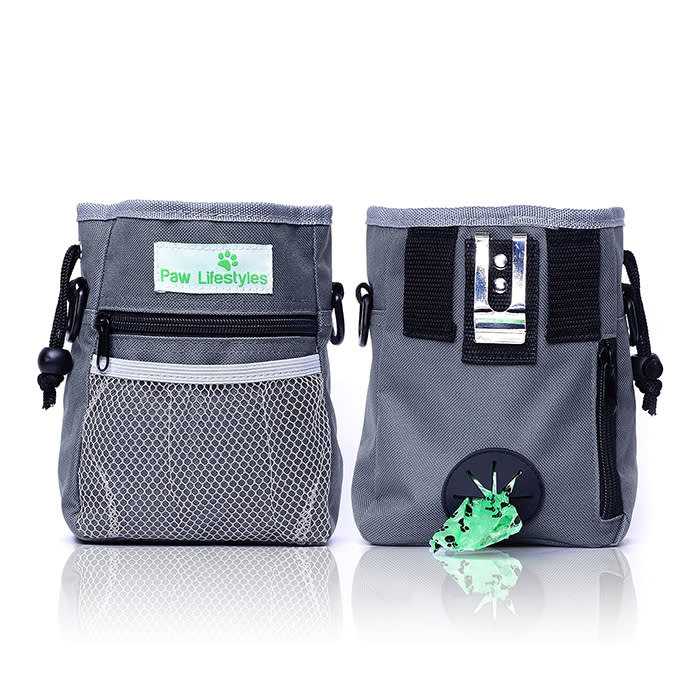The Best Training Treats for Dogs in 2025
The most mouth-watering treats for training your pup.
In this Article:
The Best Training Treats Overall Best Training Treats for Puppies Best Training Treats For Small Dogs Best Training Treats for Medium Dogs Best Training Treats For Large Dogs Best Healthy Training Treats
Think of the things you do for that perfect cup of coffee — like walking entirely out of your way on your morning commute to the one barista who has mastered your latte. So just imagine what tricks you can inspire your puppy to learn with just the right reward. There’s a reason why “food motivated” is a term you’ve probably heard vets and trainers use. Praise and belly rubs are great, to be sure, but nothing beats treats. That said, it’s not as simple as dangling a carrot. Certified dog behaviorist Lauren Novackopens in new tab breaks down how to pick the perfect dog training treat. Shop our top picks below.
What makes a good treat for dog training?
The point of a training treat is to motivate your puppy to give you their undivided attention, so it makes sense that the treat should be more desirable to your dog than any other stimuli (squirrels, shoes, other puppies). If your pup is very food motivated, then this is an easy one. But some can be picky eaters, in which case you’ll need to up the ante. Novack suggests categorizing treats into three categories: low, medium, and high value.
When working on a dog-training skill that your dog knows pretty well, go for low-value treats. Low-value treats can be your dog’s kibble. “They eat it a lot already, and while it tastes good, it’s only going to be motivating in reinforcing behaviors they’ve already got down pretty well,” Novack says. Because treats should make up no more than 10 percent of your dog’s daily calories, this option is best for dogs who will eat anything and dogs who are watching their weight because kibble is lower in calories than most treats.
Medium-value treats are a step up. From classic crunchy dog biscuits to healthy snacks, such as apple slices and baby carrots, medium-value treats are great for training when your dog needs a little extra encouragement, or just to mix it up. You’d be hard-pressed to find a dog who would turn one down; they just may not do backflips for it.
How much do you spend on your pet per year?
But when training your dog to perform a new skill, you need to pull out all the stops. Small, strong-smelling, easily-servable high-value rewards are the best dog training treats. High-value treats are generally meaty…and stinky. They should make your dog drool. Dogs experience the world through their noses — 33 percent of a dog’s brain is dedicated to interpreting odors — so the smellier the treat, the better.
Flavors like bacon and venison are particularly pungent and covetable. As a rule, dog training treats should be pea-sized and easily portable, so they don’t take your dog ages to chew (or crumble up in your pocket). But if your dog is prone to distraction, you’ll have better luck with human snacks like hot dogs or cheese.
“Dog parents and trainers need to find a balance between high value treats while also being conscious of the dog’s health,” says Sean Prichard, canine fitness coach and president of Pant & Wagopens in new tab. “Many treats are void of nutrition and loaded with calories and sugar, which is detrimental to a dog's fitness level.” In some cases, however, it’s OK to reward your dog with a salty, delicious and calorie-laden human treat, like a hot dog.
“If you have a dog that’s overly excited, wants to greet everyone, and you’re fighting to get their attention, then yeah, you should try hot dogs — break them up before a training session so you’ve got small pieces on hand,” Novack says. “And remember, just like us, dogs tire of the same treats if they’re given often enough. The more variety you can provide your pup, the more interested they will be in learning new things.”
While pea-sized pieces of hot dogs, cheese, liver and dried chicken hearts (a fave of dog behavior consultant Ali Smith, founder of Rebarkableopens in new tab) make good high-value treats, you can also order a supply of ready-made, mouth-watering (for your pup, that is) treats to save yourself some prepping and chopping time. Below, you’ll find some of the best dog-training treats with proven results.
Btw, our editors (and their pets) picked out these products. They’re always in stock at the time we publish, but there’s a chance they’ll sell out. If you do buy through our links, we may earn a commission. (We’ve got a lot of toys to buy over here, you know?)
The best dog training treats
Bocce’s Bakery treats are a great training option for all pups because they are a low-calorie choice (only four calories!) and are made of 100 percent natural ingredients. They are small and easy to fit in a pocket or treat pouch. You can always have these on the go for any training opportunity (you never know when one will pop up).
Best training treats for puppies
Welcoming a new puppy into your home is an exciting — and often exhausting — time. The last thing you want to be doing is boiling and chopping hot dogs. Besides, you’ll likely be putting in a lot of training hours, so it’s a good idea to go easy on the high-value human treats. Try these store-bought snacks that are perfect for puppies.
Best training treats for small dogs
A training treat should always be small, so your dog can gulp it down quickly and get on with training time. But when you’ve got a pint-sized pup, you want to make sure their training treats are tiny, too. Try these small, soft treats when you’re teaching your friend the ways of the world — and don’t forget to teach them how to take treats gently, while you’re at it.
Best training treats for medium dogs
When your dog is not too small, not too big, but just-right sized, they can do well with pretty much any type of treat. Like a middle child, a medium-sized pup is generally easy to please and goes with the flow (at least when it comes to treats). A freeze-dried raw meat treat makes a nice high-value reward for medium dogs (or for any dog, really).
Best training treats for large dogs
Just because your dog is big doesn’t mean they need a bigger training treat. (Sorry, Beethoven.) Pea-size is still the way to go, no matter how hearty your large dog’s appetite. That said, a big dog can probably handle a treat that’s on the crunchier or chewier side, as long as they have any dental issues that make it difficult to chew.
Best healthy training treats for dogs
Sure, you want your dog to learn how to sit, stay, heel and all the rest — but not at the expense of their health. A healthy training treat can still be a yummy, high-value training treat. In fact, you might find your pup prefers a treat that’s made without fillers and artificial flavors. “Lots of people believe dogs prefer highly processed treats, but usually that’s not the case,” Smith says.
Best low-calorie training treats for dogs
If your pup is watching their weight — or rather, you’re watching it for them — they can still have treats. Plenty of training treats are low in calories, so you can reward all your dog’s good behavior without getting a stern talking-to at your next vet visit.
Best soft training treats for dogs
Whether you’ve got a senior dog who can’t chew as well as they once could or a teething puppy who hasn’t quite mastered crunching yet, soft training treats come in a plethora of flavors that will delight your dog without causing dental distress. Here’s one to try.
FAQs (People also ask):
Can I use training treats for my dog if they have a sensitive stomach?
Does your pup have tummy trouble? Not to worry. There are many training treats for dogs with sensitive stomachs. Look for treats that are free of grains, gluten, and other ingredients likely to upset your dog’s digestive tract. Read the label to make sure the treats don’t contain anything you know spells trouble for your dog — just because a product is labeled as being suitable for sensitive stomachs doesn’t mean it will work for every pup (though it’s a good start).
Can you train a dog without treats?
While treats are certainly a huge help with training, they’re best used in combination with other methods. “Treats should be just one tool in your training toolbox,” Prichard says. “A well-rounded training approach includes a mix of positive reinforcement including treats and verbal praise, exercise, and socialization.”
What are alternatives to training treats?
“For food motivated dogs, the easiest and best reward is usually a treat,” Prichard says. If you don’t want to use store-bought treats, that’s fine of course — you can chop up hot dogs, cheese, or other meats into pea-sized portions, or try your hand at making homemade dog treats for training.
How can I take training treats on the go?
Headed to the park with your pup for a training session and don’t want to put dog treats directly in your pocket? Instead of using a sandwich bag or hauling the whole container of treats along with you, pick up a treat pouch for dog training. Designed specifically for this purpose, some will also hold poop bags, making them a must-bring on all your dog walks.
Can you make dog training treats at home?
Absolutely. There are plenty of recipes for homemade dog treats, including this one from chef Dan Churchill that calls for just three ingredients: dates, oats, and peanut butter.
